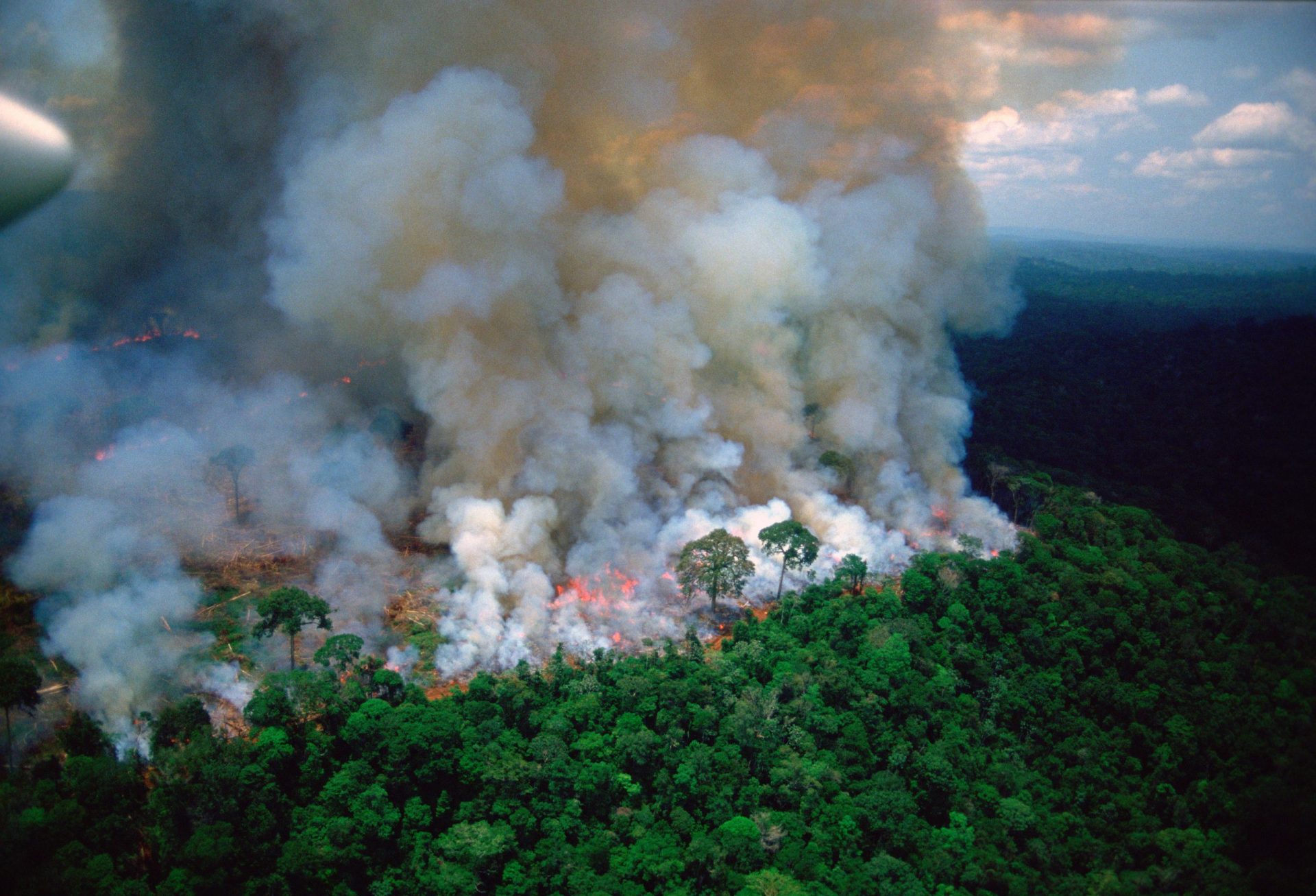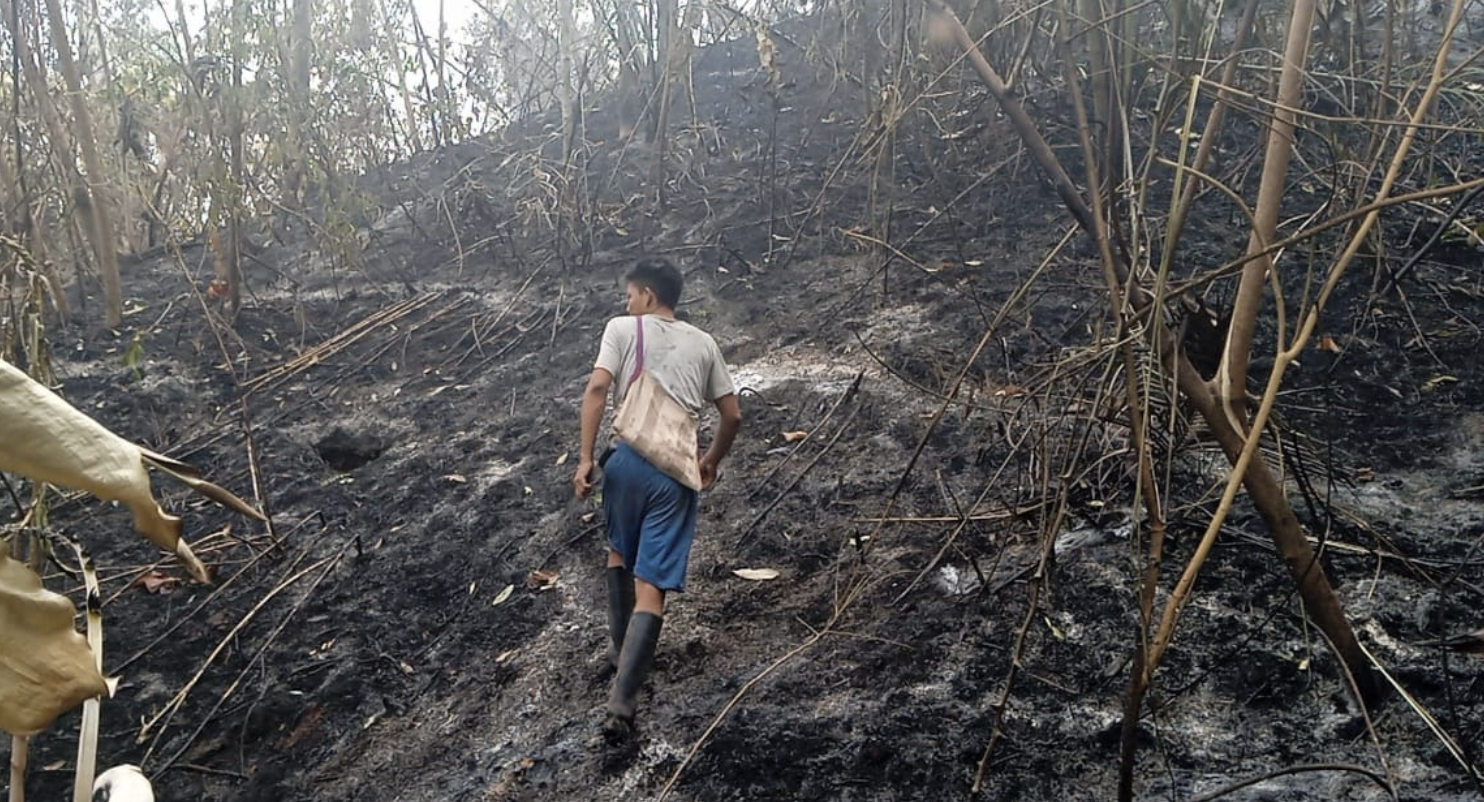Protecting Indigenous Peoples from Rainforest Wildfires
When rainforests burn, local communities are the ones to feel the heat.
Wildfires have catastrophic consequences. In recent months, we’ve seen devastating headlines with more than 20 thousand people fleeing their homes in Yellowknife, Canada and 97 people who lost their lives in Lahaina, Hawaii.
And this is just the start.
According to a new report, climate change and land use change are expected to make forest fires more frequent and intense, with a predicted 14% global increase in extreme fires by 2030.


A wildfire in the Amazon rainforest.
Preventative action is essential
The Global North produces the greatest amount of carbon emissions, fuelling the climate crisis. The people who then suffer most from the knock-on effects are those who are least equipped to cope with this new reality, Indigenous Peoples and Local Communities living in the rainforest.
Typical responses by governments and other organisations to wildfires are often misplaced. According to the UN, only 1% focuses on prevention and planning, while most funds are directed to emergency response. By this point, it’s too late.
Indigenous Peoples and Local Communities are uniquely positioned to lead the response to the climate crisis from the heart of rainforests. They have the knowledge and experience to manage and safeguard their land, but they need the tools and capacity to do so effectively.


Fires burning through Asháninka territory in Peru.
The reality
Life in rainforests is fraught with challenges; the lack of government support, illegal economies such as drug trafficking, logging and mining. All of these make it difficult for Indigenous Peoples to protect their homes.
For example, in communities where there is no access to water, putting out a fire in the middle of the dry season is impossible. The damage lasts for days, weeks or years afterward, and the loss of crops, homes and resources that the forest provides are irreparable.
Providing tools so that Indigenous Peoples and Local Communities can face the challenges of the climate crisis, including wildfires, is vital. And here’s a project Cool Earth is supporting that shows just that.
Data is power
Cool Earth has been working in partnership with the Central Asháninka del Río Ene (CARE) on an initiative that will see more than 10,000 people in 19 Indigenous communities in the Peruvian Amazon benefit from an Early Warning System. This project provides access to technology, satellite data and information exchange hubs so that communities can receive real-time information on social, territorial and environmental issues that may affect them and take action. This includes vital information about wildfires.
As global temperatures continue to rise and the El Niño weather system approaches, an Early Warning System for forest fires will make all the difference.
Take action
Losing rainforests to wildfires reduces the ability of these incredible ecosystems in mitigating the climate crisis itself, endangering the whole planet. If protected correctly, rainforests are our best bet in fighting the climate crisis.
Supporting the rights of Indigenous Peoples and Local Communities that inhabit and safeguard rainforests makes a significant difference in our chances of keeping these ecosystems and the rainforest standing.
Could you imagine if more projects like these, that put Indigenous Peoples and Local Communities at the heart of the solution, existed around the world? Well, it’s not too late for us to continue developing preventive measures that keep both Indigenous Peoples and the rainforest safe. You can support more people powered projects by donating to Cool Earth today.
